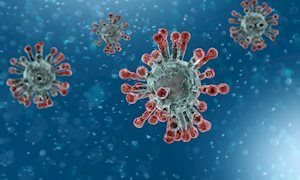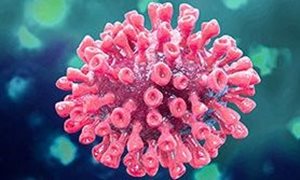 Drugs that protect pets against ticks and fleas can also be used to prevent outbreaks of malaria, Zika and dengue fever in humans. If 30% of the population is given only a single dose, in some cases this could reduce the number of infections by as much as 97%. This was the conclusion of an article by scientists from TropIQ Health Sciences, together with English and American colleagues, that was published this week in the journal PNAS.
Drugs that protect pets against ticks and fleas can also be used to prevent outbreaks of malaria, Zika and dengue fever in humans. If 30% of the population is given only a single dose, in some cases this could reduce the number of infections by as much as 97%. This was the conclusion of an article by scientists from TropIQ Health Sciences, together with English and American colleagues, that was published this week in the journal PNAS.
Photo: Malaria mosquitoes in the TropIQ Health Sciences laboratory die after a blood meal containing an isoxazoline. (Photo: Martien Schouten)
Watch the video about this item here. (Dutch TV program Een Vandaag)
Every year, hundreds of millions of people get sick due to malaria, Zika and other insect-borne infectious diseases in the tropics and subtropics. In 2016, half a million children in Africa died of malaria. In recent outbreaks, Zika mainly caused abnormalities, some very severe, in newborn babies of infected mothers. The tropical infectious disease dengue fever infects 50 to 100 million people annually, resulting in half a million hospitalizations and between 12,500 to 25,000 deaths.
No vaccines and increasing resistance
“Combatting insect-borne diseases is largely based on the use of insecticides and mosquito nets. However, these approaches are not sufficient to prevent outbreaks,” explains Robert Sauerwein, Chief Scientific Officer (CSO) of TropIQ and professor of Medical Parasitology “Vaccines are not available for many diseases, and drugs are losing their effect due to increasing resistance.”
Quick reduction in transmission
Researchers at TropIQ Health Sciences and colleagues at the California Institute for Biomedical Research (Calibr), the Imperial College in London and other institutes examined the effect of isoxazolines, a class of veterinary drugs, on outbreaks of infectious diseases such as malaria, Zika and dengue fever. The drugs do not prevent people from becoming infected, but ensure that the vectors of the disease – mosquitoes – die quickly after a blood meal. In this way, further transmission can be quickly reduced.
Effective at a very low dose
“Even at very low doses in human blood, isoxazolines kill all blood-feeding insects,” explains Koen Dechering, CEO of TropIQ Health Sciences. “A single administration of the drug to less than a third of the population reduced the number of infections by 97% in some cases.” The research, which was funded by the Bill and Melinda Gates Foundation, has been published in Proceedings of the National Academy of Sciences (PNAS). In this article, the researchers describe how a single, low dose of the isoxazolines tested in the study – fluralaner and afoxolaner – can be effective against the insects for 50 to 90 days. Both isoxazolines are also effective against insects that are resistant to commonly used insecticides.
Major impact
“Mosquitoes thrive in wet conditions, and in many regions infectious diseases occur primarily during the rainy season,” says Matt Tremblay, COO of Calibr. “If you administer one of the isoxazolines at the start of the rainy season, it can provide long-term protection against new infections,” he says. “Infectious diseases transmitted by insects are still a major cause of death in many countries,” explains Dechering. “That’s why new drugs to prevent outbreaks are urgently needed. Isoxazolines are very effective against multiple insects, and can have a major impact on the control of various infectious diseases in countries with limited medical infrastructure.
Predicted impact of an isoxazoline drug on the number of malaria cases in Africa. The figure shows the total reduction in the number of cases of illness when an isoxazoline is administered at the start of the rainy season for two years. (Design: Hannah Slater)
The researchers used computer models to predict the reduction in disease burden. For malaria they predicted a decrease of 70% in areas with mainly seasonal infections, such as Senegal, Sudan, Madagascar, Namibia, Botswana and Zimbabwe, when the drug was given to 30% of the population.
In regions with a higher disease burden throughout the year, the percentage of preventable cases is lower, but the overall decrease in cases of illness is still impressive. The Democratic Republic of Congo has 16-20 million cases of malaria per year, and a decrease of 30% means up to 6 million fewer cases per year. Safety studies in animals have shown that isoxazolines have a low risk of side effects in humans. The research team now wants to test safety and effectiveness in humans, and estimates that this will take about two years.
Publication in Proceedings of the National Academy of Sciences (PNAS): link.
-
Want to know more about these subjects? Click on the buttons below for more news.
Related news items

Antibodies are sustained in nasal fluid after mild corona infection
27 September 2021 Testing through nasal fluids is easier than through blood read more
Rebecca Halbach receives idea generator grant to fight mosquito transmitted viruses
8 July 2020Rebecca Halbach and Pascal Miesen have investigated in a collaborative project whether the treatment of mosquitoes with antiviral drugs can prevent the transmission of mosquito-transmitted viral diseases.
read more
Invasive fungal infections in influenza and COVID-19
8 July 2020 The Aspergillus fungus is found in the lungs of many COVID patients. A parallel occurs with influenza patients, who often develop a serious fungal infection. Although such a serious fungal infection seems to occur less frequently in COVID-patients, alertness remains necessary, read more
Radboudumc and KNAW join the Netherlands Centre for One Health
11 January 2018 Radboud University Medical Center (Radboudumc) and the Royal Netherlands Academy of Arts and Sciences (KNAW) have joined the Netherlands Centre for One Health (NCOH) as Partner as per 1 January 2018. read more

